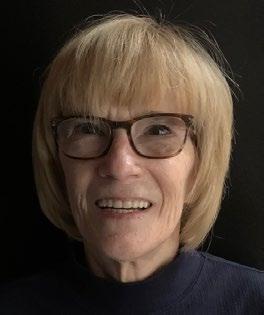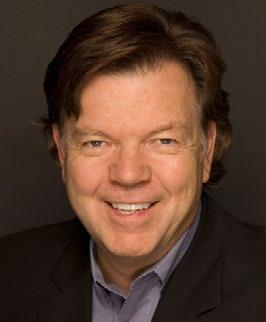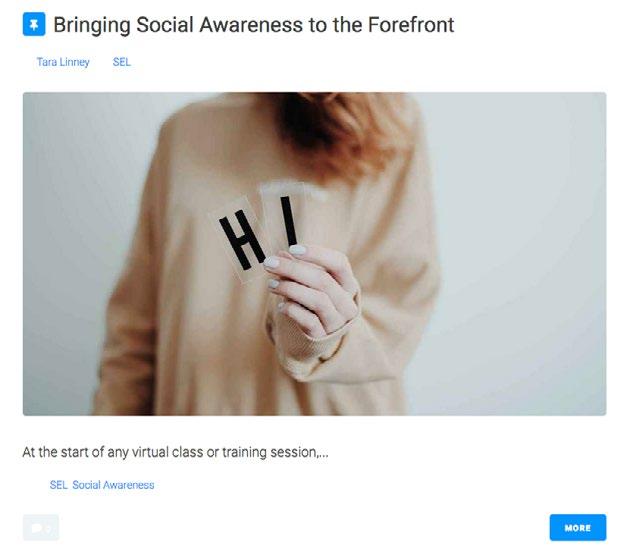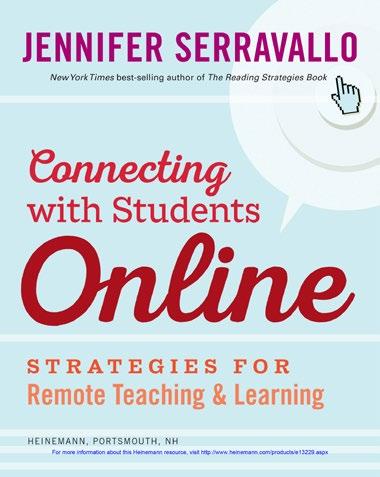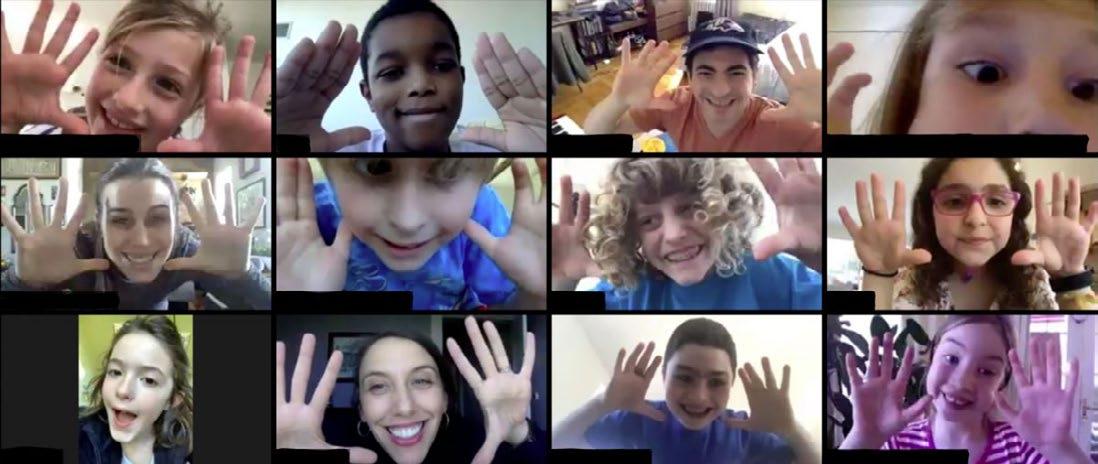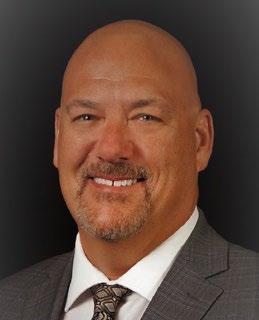
16 minute read
Preserving the Triangle of Learning
Article
Preserving the Triangle of Learning: Increasing Engagement and Learning Throughout Remote and Hybrid Learning During the COVID-19 Pandemic
Michael Buhl
Geoffrey Schmidt
The pandemic has affected all students in the US and around the world. The impact on some has been greater than others. Here’s what we at Opportunity Academy in Holyoke, MA are trying to do about it.
Recently, during the fall literary showcase at our school, Holyoke Public Schools’ Opportunity Academy (OA), an expert panelist, Unman Hameedi, spoke about the power of our instructional pillars—feedback and revision, learning beside experts, and giving students permission to go deep on their work. These strategies, rather than scrambling from assignment to assignment, are instructional priorities at OA. Hameedi, a nationally recognized SLAM poet, who had workshopped several of our students’ poems with them numerous times, said,
At Holyoke Public Schools’ Opportunity Academy, our mission is a seemingly simple one: “Everyone deserves a good education. Everyone deserves a rewarding life.” Because we are intentionally designed to serve high school students of all ages who have gotten off-track in their education, dropped out entirely, or found themselves at severe risk of doing so, this mission can be more challenging than its simplicity lets on. Our students possess a wealth of reasons why success in high school is difficult—homelessness, teen parenting, trauma and mental health concerns, needing to work at a young age. Multiply those obstacles by the crises of pandemic learning, and you can imagine what a concern engagement has been for our team at Opportunity Academy since March.
We know innovative alternative schools like our own are not alone in combating waning engagement for student learning during this time. In districts like ours, the pandemic has precipitated unprecedented numbers of high school students who are now off-track from their graduation cohort. Indeed, the pandemic will almost certainly have a “hangover” effect, creating an inevitable bubble of off-track high school students to which districts will need to plan a response, starting right now. In Holyoke, we have experience in redoubling engagement efforts, well before remote learning made the need a universally prevalent one. Created 4 years ago as part of a full-scale district turnaround effort, Opportunity Academy has fundamentally changed the learning opportunities available for students whose paths through high school hit the rocks for one reason or another.
Over the last 4 years, the district’s dropout rate has fallen from a historical average of around 10% to 5.9% then to 4.7% the to 3.9% and finally, a rate for 2019-20 that, when official, will very likely be under 3%. While many changes have happened that have helped keep more students moving towards a diploma, Opportunity Academy, or OA as we are known in the district, is widely recognized for being the key reason why students who in prior years disappeared from the high school, now are sticking with their education, and as our increasing graduation rate also attests, receiving a diploma.
At the center of our philosophy is that engagement and academic achievement are driven by a universal triangle of learning: student, curriculum, and teacher. We have had to work particularly hard, especially during the pandemic to maintain this triangle.
While we are proud of our early accomplishments we also know a lot more has to be done to provide the quality education and choice-filled life we seek for our students. In fact, we are in the second year of an ongoing design process to tackle this problem, head-on.
We have learned some lessons along the way that we believe are valuable for all schools who are confronting the current, sobering reality: that pandemic learning inevitably equates to engagement difficulties.
In the past two years of our design work, and in the ten months of pandemic learning, we have found undeniable best practices that increase engagement— and most importantly, deepen learning— for all students. These are curricular and instructional strategies, small and large, which shift the ownership of learning to students, and require from teachers a willingness to think differently about their role. As Hameedi says, however, the payoff is a sense for students that they are not simply completing tasks, but that they own the work, and that what they are creating is special. This change in how students view their school work, especially when distance and other factors can make it easy to feel disengaged, is ultimately what has driven our students’ connections to school and their teachers at this time.
We have been lucky to partner with Springpoint Schools, a school design firm whose mission is “to enable all students, regardless of environment or background, to succeed in high school, college and beyond.” This partnership is supported by The Barr Foundation’s Engage New England Initiative, “a $30-million investment over five years to help New England innovators develop a diverse array of high school models that champion success for all students.” The results of this partnership is a laser focus on a model of instruction that emphasizes depth over breadth, engaging and relevant project-based learning, the power of feedback and revision aligned to core competencies that students will need to succeed through and beyond secondary schooling, and ultimately student ownership over their learning.
Because our students often have big holes in their background knowledge and skills, we do maintain a focus on core test-prep learning in some of our classes. This is necessary to prepare students for the retest of our state MCAS exams (students in MA are required to pass MCAS exams in ELA, math and science in order to receive a HS diploma.) However, the focus of these lessons remain in conjunction with our other two lanes of instruction: our Transformative Learning Experience (TLEs) courses, developed with and supported by our partners at Springpoint; and our personalized learning projects, heavily student-centered inquiry work that students complete with the facilitation and feedback of advisors on our faculty and staff, along with experts in their field of interest.
These two environments have critical elements in common: 1. the work is narrow in focus, and highly student-centered 2. the instruction requires a willingness by teachers to use student work and feedback as the drivers of learning, rather than relying heavily on direct instruction and lecture 3. our course curricula not only welcome, but insist upon fostering connections between students and experts in the field they study 4. they result in students producing and exhibiting artifacts that live beyond the classroom and are shared with an authentic audience.
Ultimately, a strategic vision of instruction is only as successful as its buy-in and implementation by teachers, across the classroom environments.
The Power of Experts
In five separate classes offered this year, TLEs have been supported by experts and a process of feedback and revision that requires students, teachers, and experts to leverage conferencing as the driver of student learning and quality of work. In a Slam Poetry Class (cited in this Boston Globe article) students met with the teacher, staff members who acted as writing coaches, and Slam poets themselves, to workshop their work. For these, the facilitators used breakout rooms in video conference class sessions. In a Dystopian Literature class, students analyzed and wrote their own dystopian literature stories (here is one example from student PJ King), with the support of volunteer writers from all over the country. In one class, students were tasked with developing spreadsheets that compared cars for prospective buyers, and made their pitches to customers who were on the market. They were supported in developing highquality spreadsheets with formulas by our own local experts (staff members and administrators.) In a math TLE on the loan industry, students met with bankers, loan officers, including a reformed PayDay Loan officer, and eventually an app designer, as they developed their own decks for a financial literacy app, which they pitched to a local entrepreneurial board.

Caption and Photo from the Boston Globe article: Geoffrey Schmidt has begun organizing his students into online breakout groups, where two or three can workshop their own verse while Schmidt and a co-teacher rotated between the groups. JESSICA RINALDI/GLOBE STAFF
What makes the expert connections in these classes different than the typical field trip or guest speaker, is that the teachers adapted curriculum, and designed learning activities and assessments around expert involvement, not merely with the expert voice as a supplementary activity. This required teachers to rethink their planning time to allow for more collaboration, preparation, and facilitation of the experts, who in turn took on some of the workload of providing direct feedback and assessment of student work. Our teachers acknowledge this is not easy.
“Planning for the TLEs is more rigorous,” Nicole McNeil, an OA Math Teacher says. “There are more activities to plan for, and the experts and exhibition require planning and coordination with the community. It’s a heavy lift for the students, so it requires more scaffolding” (than typical units.) However, while they admit the units required more work, they are adamant the payoff is worth it, Danielle Razon, an ELA teacher at OA, says: “The planning is totally worth it, because the students are forced to do work and revisions outside their comfort zone, so they create pieces that are better than they may have ever anticipated. It allows growth for the student on an academic level, but also promotes confidence for them on a personal level, which makes all the planning worth it!”
Across the board these classes benefited from a small shift in pedagogical approaches by teachers with remote learning. We anticipate these shifts will carry over into hybrid learning, and even our return to a full in-person model in future years. The big shifts included the importance of providing students private work-time, with regular conferences, and feedback.
Feedback as the Driver
Even in the early days of remote learning, our teachers were trying to figure out how best to utilize the breakout room features in video conferencing. We tried small group work. We tried to replicate gallery walks, and we tried to have co-teachers circulate between two breakout rooms with the hope smaller groups would encourage more student interaction. It was, perhaps, simply good luck that we stumbled across its best use however: creating small private spaces (and time) for students to be set off on individual work with clear expectations and accountability check-ins.
After what we learned with our first foray into remote instruction last spring, we narrowed the goals of our professional development this summer and fall, emphasizing a focus on feedback and conferences within those spaces (as well as in written and video formats, using tools like screencast-o-matic.) The result is that when one observes our remote classrooms, it is now extremely rare to find the whole class in one Zoom session, with the teacher providing direct instruction and whole group practice.
Our teachers were already undergoing a shift from “sage on the stage” to “guide on the side” before the pandemic. However, the difficulty remote learning presented in getting students to engage and participate in whole-group settings accelerated the speed of transformation. Indeed, not seeing our silent students has only made clear for some of us, how many of our students were able to look engaged in whole group learning, but were truly lost. By focusing on individual feedback, clarity of personalized directions and instruction, and regular review of individual students’ work, we’ve learned more about what each student does and doesn’t know, and fostered a culture of learning that empowers students to own their work, and allows teachers to better know each students’ needs.
Bryan Barsolou, Special Education teacher, says, “performing deeper dives with such rigorous curriculum allowed us as teachers to develop a keen understanding of who our students were and just how far they could go. I felt that I was able to get the class from a to b much quicker by listening for the nuances that made each learner their unique self in the classroom.”
There is no denying that this approach slows down the breadth of curriculum we cover in our classrooms. We happen to think this is a smart tradeoff. During our ongoing design work we have lived by a motto borrowed from the Navy: “Slow is smooth, and smooth is fast.” What conferencing and feedback requires is a level of revision and emphasis of mastering skills that typical pacing calendars will not allow. Research, however, shows that what is needed for students’ post-secondary success is not an accumulation of information, but a mastery of certain transferable skills, or competencies.
Going Deep, Not Wide
Expert involvement, and feedback cycles are instructional strategies which work together in service of a curricular and learning systems approach rooted in evidence-based best practices. A shift away from accumulation of content knowledge and towards mastery of skills is a massive lift across an entire school, even a small one like ours. Nevertheless, within each classroom a teacher can take small but important steps towards assessing students based on their mastery of skills or competencies, and aligning their learning activities, thusly.

The first is to take a lesson from Universal Design for Learning strategies, and to start with the end in mind. Rather than merely identifying which standards a teacher hopes their students to master, we ask our teachers to consider which of our competencies (transferable skills) students will be exercising in the unit and its related assessments. By identifying these competencies, teachers and instructional leaders can audit assessments, activities, and lessons to ensure alignment. Likewise, revisiting grading practices to not only allow for, but even reward, revision and resubmission of assignments has given teachers a framework with which to use rubrics and common language about our competencies. Within professional learning communities, teachers build that common language and understanding of mastery through Looking at Student Work (LASW protocols.) These LASWs are done in teacher meetings, and even in whole team meetings, expanding this work to our entire community.
Our teachers have started to use “singlepoint rubrics” that cite what mastery would be like for a specific competency. These act as the centerpiece of teachers’ conferences with students, and often this translates to students taking more ownership over their work, as they are asked to identify where they have and haven’t met criteria; and are helped by the teacher to recommend for themselves next steps in the areas where they still need improvement. Some teachers have explicitly taught the competencies students will be working on in a unit, asking students to define the competency for themselves, and identify tasks aligned to each. Others have relied on the implicit teaching of rubrics-based conferences. All OA teachers this year have used the unique circumstances of remote learning to try to work competencies into small portions of curriculum (assessments, or even daily assignments.) This practice is recommended by our partners at Springpoint, and has allowed our teachers to experiment in low-stakes ways, which we are then able to provide feedback on for future practice (a parallel process to what we ask teachers to do with our students.)
In our personalized projects class, teacher advisors start with specific competency attainments in mind, which they and the student have determined are high priority for the students’ growth. Projects are then designed with the students’ input to allow them opportunities at scaffolding these competencies, and a process for regular activities, feedback, and adjustments to build towards projects that exercise these skills. While in one personalized project class there may be dozens of students working with several teachers, each student is working on a project tailored to their pursuits and inquiry interests, and teachers are using private conferences to help students identify how these are aligned to their competency targets. While this class is new, we have seen the results in student publications in The Boston Globe; a student recording a song with a nationally recognized artist; and a student working with our school-based Trauma-informed education team to develop a youth leadership program curriculum.
What could this look like in a more traditional classroom? For starters it can look like assessments that center a criteria for success and student agency in developing a final product to meet those criteria. If a teacher wants students to analyze poetry, for instance, the teacher could create a rubric that identifies the precise skills that a student would exercise in order to do this, and then help each student identify the modality in which they will do so. This might result in some students producing their own collection of poetry, others producing a short video, or designing a youtube channel where they and their classmates analyze their favorite songs.
The Big Takeaways
By next winter we all hope to be delivering in-person instruction as the backbone of our schools, once again. When we are able to do so, however, our team at OA will take with us lessons from this year that should change our model for the better. Many of these lessons reshape what we think about when we consider student engagement (and disengagement.) A problem we once tackled as an attendance behavior, we now reconsider as a byproduct of a school’s personalized approach. As we continue to design for more in-person learning, there will be programmatic changes as a result of what we have learned (we will, for instance, almost certainly maintain some online only synchronous and asynchronous courses.) But our teachers’ instruction will, itself, be improved from our takeaways. Conferencing will take a center position in our classrooms. Units, assessments, and lessons, designed around students exercising growth of particular transferable skills has become a nonnegotiable. And the power of expertise in learning is now, more than ever, at our fingertips through the wonder of videoconferencing, and tele-connections.
We also continue to remind teachers that the best practices around mastery of competencies that we have focused on throughout the pandemic are transferable to every learning environment. Providing students with a clear criteria of success, and frequently using the language of those criterion in our conversations with students about their progress, keeps the focus on their work, rather than on the completion of tasks. In turn, this gives students more ownership over their own work. And students who hold a sense of ownership over their work are more likely to remain engaged with it. To maintain our momentum, it is critical for teachers and leaders to continue the practices that have led to success: building common language around the competencies that set students up for long-term success, and continuously building on instructional strategies that center the students’ work and not the teachers’ dissemination of information.
Michael Buhl is Executive Director of Opportunity Academy.
Geoffrey Schmidt is School Design Lead of Opportunity Academy for Holyoke Schools.

